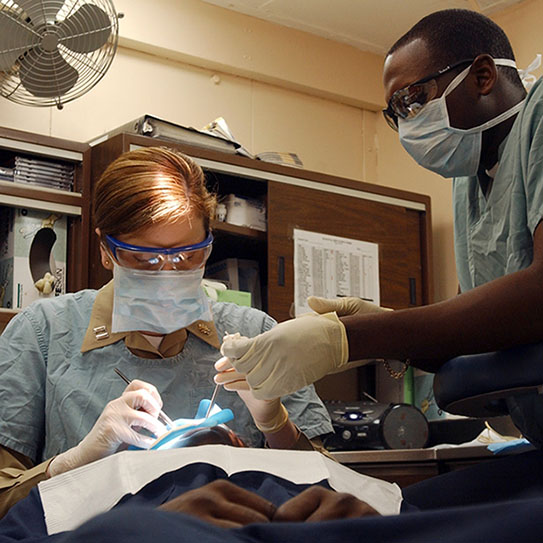
IT MIGHT SEEM like root canal therapy is only possible because of the tools and knowledge we have in the modern day. While it’s true that endodontic treatment is far better today than it was in the past, people have attempted to operate on the inside of teeth since the second or third century B.C.
A skull from that period was discovered in Israel with bronze wire inside one of the teeth, indicating an ancient technique for treating infected root canals without extracting the tooth. The road from there to modern endodontics has been long and surprisingly dramatic.
The Timeline of Endodontics
- Mid-18th century: The father of modern dentistry, Pierre Fauchard, described dental pulp removal and debunked the mistaken idea that “tooth worms” are what cause cavities and toothaches. (The real villain was sugar all along!)
- 1820: Leonard Koecker used a heated instrument to cauterize exposed dental pulp, then protected it with lead foil.
- 1838: In Washington, D.C., Edwin Maynard introduced the first root canal instrument, which he made by filing a watch spring.
- 1847: Edwin Truman first used gutta-percha as a filling material, and we still use it today!
- 1864: In New York, S.C. Barnum prepared a thin rubber leaf to isolate the infected tooth during treatment. He and G.A. Bowman developed the rubber dam clamp a few years later, and these are all still important parts of root canal therapy today.
- 1895: By accident, Konrad Wilhelm von Roentgen discovered X-rays, and just weeks later, German dentist Otto Walkhoff put that discovery to use by taking the first dental radiograph.
The Big Setback of Focal Infection Theory
Despite all these wonderful advancements across the previous century, the field of endodontics suffered a terrible blow in 1909. E.C. Rosenow put forward his theory that endodontic treatment caused something called “focal infections,” which meant that the treated tooth became a pathway for chronic disease in other parts of the body.
Whether accidentally or maliciously, Rosenow got it backwards. If an infected tooth isn’t treated, the infection can spread to the bloodstream, which is life-threatening. Endodontic treatment gets rid of the infected pulp and allows patients to keep their natural teeth.
As wild as focal infection theory seems today, back then it wreaked havoc across the field of dentistry for decades. The growing mountain of lab research and clinical evidence to support the validity of endodontic treatment finally overwhelmed proponents of focal infection theory by the early ‘50s, but so much damage had already been done. Countless teeth that could have been saved were pulled. Even worse, many perfectly healthy teeth were pulled based on the idea that doing so would cure an ailment in another part of the body.
Endodontics: Victorious!
Today, despite the decades of advancement lost to the ravages of focal infection theory, endodontic treatment has one of the highest surgical success rates in medicine. We have all those determined researchers to thank for restoring the specialty’s good name!
Watch this video for an educated guess on where endodontics goes from here:
The Value of Anesthesiology to Endodontics
No matter how far we’ve come in treating diseased dental pulp and saving teeth, none of that would be very useful if not for how far we’ve come in anesthesiology. Our ability to ensure a patient’s comfort during their procedure is only possible thanks to the science of pain relief, but the history behind anesthesiology deserves its own timeline.
Enjoy Comfortable, Tooth-Saving Treatment
We are proud to stand on the shoulders of giants as modern endodontists. There are so many great minds going back centuries that helped us get to where we are today: able to offer our patients highly reliable and comfortable treatment. If there’s a tooth you’re worried about, don’t wait for it to get worse; take action by scheduling an appointment with us. We can determine if endodontic treatment can help.
